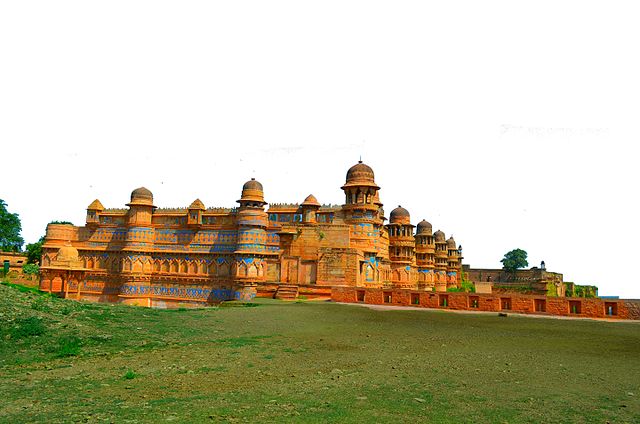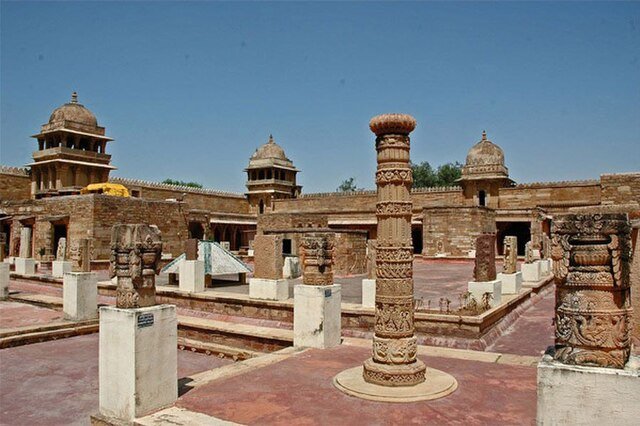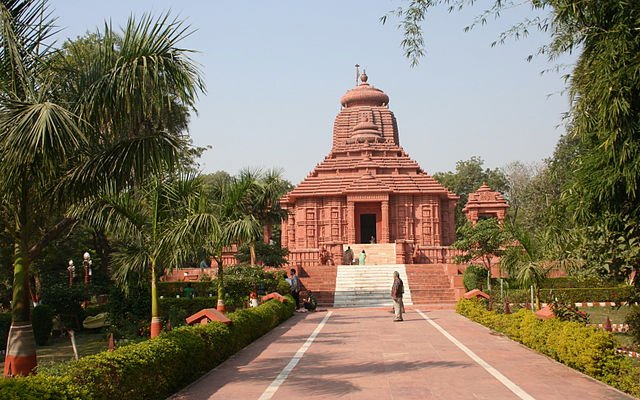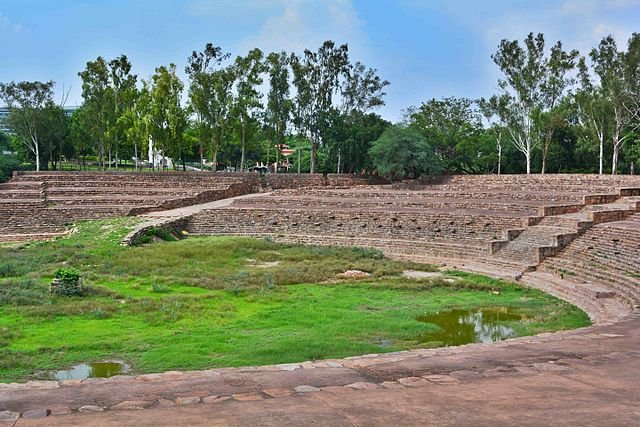Gwalior is a city of historical and cultural significance in the state of Madhya Pradesh, India. It is famous for its majestic fort, splendid palaces, ancient temples, and musical heritage. Gwalior is also known as the city of Tansen, the legendary musician of the Mughal era. If you are looking for a One Day Gwalior Sightseeing Trip, then you can book a private cab and explore the best attractions of the city at your own pace and convenience.
In this article, we will provide you with a suggested itinerary for a one day Gwalior sightseeing trip by private cab, covering the most popular and interesting places to visit in Gwalior. You can customize this itinerary according to your preferences and budget. Let’s get started!
One of the benefits of booking a private cab for your Gwalior sightseeing trip is that you can enjoy the comfort and safety of your own vehicle, without having to worry about public transportation or driving yourself. You can also save time and money by avoiding traffic jams and parking fees. A private cab will also allow you to visit the places that interest you the most, and skip the ones that don’t. You can also stop at any point to take photos, shop, eat, or relax. A private cab will give you the flexibility and freedom to make your Gwalior trip memorable and enjoyable.
A one day Gwalior sightseeing trip by private cab is a great way to explore the city’s rich heritage and culture, while enjoying the comfort and convenience of your own vehicle. You can visit some of the most iconic and beautiful attractions of Gwalior, such as the Gwalior Fort, Jai Vilas Palace, The Gujari Mahal, Sun Temple, Tomb Of Tansen, Assi Khamb ki Bawadis, Suraj Kund, Siddanchal Jain Temple Caves, Gov. Museum, and more. You can also experience the local cuisine, music, art, and crafts of Gwalior.
A one day Gwalior sightseeing trip by private cab will surely leave you with unforgettable memories and impressions of this amazing city.
Table of Contents
Overview of One Day Gwalior Sightseeing Trip By Cab
A one day Gwalior sightseeing trip by private cab is a great way to explore the city’s rich heritage and culture, while enjoying the comfort and convenience of your own vehicle. You can visit some of the most iconic and beautiful attractions of Gwalior, such as the Gwalior Fort, Jai Vilas Palace, The Gujari Mahal, Sun Temple, Tomb Of Tansen, Assi Khamb ki Bawadis, Suraj Kund, Siddanchal Jain Temple Caves, Gov. Museum, and more. You can also experience the local cuisine, music, art, and crafts of Gwalior. A one day Gwalior sightseeing trip by private cab will surely leave you with unforgettable memories and impressions of this amazing city.
Gwalior is a city of historical and cultural significance in the state of Madhya Pradesh, India. It is famous for its majestic fort, splendid palaces, ancient temples, and musical heritage. Gwalior is also known as the city of Tansen, the legendary musician of the Mughal era. The city has witnessed many glorious and turbulent events in its history, from the rule of the Tomars, the Mughals, the Marathas, the Scindias, to the British. The city has also been a center of learning and arts, producing many eminent personalities such as Rani Lakshmibai, Tatya Tope, Baiju Bawra, Jhansi Ki Rani, and more.
Booking a private cab for your Gwalior sightseeing trip is easy and convenient. You can choose from a variety of options available online or offline, depending on your budget and preferences. You can also compare the prices and reviews of different cab operators and select the one that suits you best. You can also book your cab in advance or on the same day, depending on the availability and demand.
In this article, we will provide you with a suggested itinerary for a one day Gwalior sightseeing trip by private cab, covering the most popular and interesting places to visit in Gwalior. You can customize this itinerary according to your preferences and budget. Let’s get started!
Highlights of Gwalior One day Tour Package By Private Cab
- Duration: Total Duration Morning 09.00 am to 5.00 pm (8 hr) (Full-day Gwalior One day Tour Package By Cab)
- Private Cab (Not Shared)
- Experienced Cab Drivers.
- AC Cab
- Pickup & Drop From Home / Hotel Gwalior.
- Visiting the Gwalior Fort, one of the most impressive and well-preserved forts in India, and exploring its various palaces, temples, and monuments.
- Admiring the Jai Vilas Palace, a 19th-century palace built by the Scindia dynasty in European style, and seeing its rich collection of art, furniture, weapons, and other objects.
- Learning about the history and culture of Gwalior at the Gujari Mahal, a 15th-century palace built by Raja Man Singh Tomar for his Gujar queen, Mrignayani, and now an archaeological museum.
- Witnessing the beauty and architecture of the Sun Temple, a modern temple dedicated to the Hindu sun god Surya, modeled after the famous Konark Sun Temple in Odisha.
- Paying your respects at the Tomb of Tansen, one of the greatest musicians of India and one of the nine jewels of Akbar’s court, and enjoying the musical atmosphere of the place.
- Exploring the Assi Khamb ki Bawadis, a group of step-wells surrounded by eighty stone pillars near the Man Singh Palace, and discovering their underground chambers and temple.
- Ending your day with a visit to the Suraj Kund, an ancient reservoir built by Suraj Pal of Tomar dynasty in the 10th century, and seeing its sun temple and pool. You can also catch the international crafts fair held every year in February at this place
Itinerary Of One Day trip to Gwalior by Cab.
The pick-up will be from Gwalior Home/Hotel between 8.00 and 9.00 in the morning.
| Place | Timing | Entry Fee |
|---|---|---|
| Gwalior Fort | 6 am to 5:30 pm | ₹75 for Indians and ₹250 for foreigners |
| Jai Vilas Palace | 10 am to 4:30 pm | ₹120 for Indians and ₹800 for foreigners |
| The Gujari Mahal | 10 am to 5 pm | ₹10 for Indians and ₹100 for foreigners |
| Sun Temple | 6:30 am to 6 pm | Free |
| Tomb Of Tansen | 8 am to 6 pm | Free |
| Assi Khamb ki Bawadis | 8 am to 6 pm | Free |
| Suraj Kund | 6 am to 6 pm | Free |
| Siddanchal Jain Temple Caves | 8 am to 5 pm | ₹5 for Indians and ₹100 for foreigners |
| Gov. Museum | 10 am to 5 pm (closed on Mondays) | ₹10 for Indians and ₹100 for foreigners |
Your location in Gwalior will be dropped off between 5.00 pm and 6.00 pm.
Package for One day Gwalior Local Sightseeing By cab
Hatchback
Economy
- 4 Person
Seating Capacity - (Indica, Ritz, WagonR,
Celerio etc.
Sedan Cab
Most Recommended.
- 4 Person
Seating Capacity - Dzire, Etios, Indigo,
Xcent Etc. - Most Recommended
SUV Cab
Spacious and Luxurious
- 6 Person
Seating Capacity - Ertiga, Xylo, Lodgy,
Tuv300 etc. - Spacious and Luxurious
What Is Including and Excluding In One day Gwalior City tour package by Private cab?
Including Package
Pick-Up And Drop From Hotel Or Home.
Selected Cab Charges.
Driver Charges.
Toll Charges.
Itinerary Of One Day Gwalior Sightseeing trip By cab
Excluding Package
Multiple Pickup And Drop.
Accommodation.
Food (Lunch, Breakfast, or any Food.)
Entry Fee. (Some Places Charge Entry Fee
For Booking One Day Gwalior Local Sightseeing by Cab.
The following cab service providers are planning One day Gwalior local Sightseeing package. You can contact them, ask for information, and book a One Day Trip to Gwalior for you.
You can do business with us. Vender Registration
Call This Number to inquiry and Book your cab
Fill the call request form, We will contact you.
Chat one WhatsApp we will reply on WhatsApp.
Places to Visit in Gwalior : Gwalior One day Tour Package by taxi
Gwalior Fort

Gwalior Fort is one of the most impressive and well-preserved forts in India, located on a hilltop overlooking the city of Gwalior. The fort was built by the Tomar dynasty in the 8th century and later expanded and renovated by the Mughals, the Marathas, and the Scindias. The fort covers an area of 3 square kilometers and has two main entrances, the Elephant Gate and the Badalgarh Gate. The fort complex contains various palaces, temples, and monuments that showcase the architectural and artistic excellence of different periods of Indian history. Visit during One day Gwalior City tour by cab
Timing/Entry Fee
The fort is open from 6 am to 5:30 pm and the entry fee is ₹75 for Indians and ₹250 for foreigners.
Things to Do
- Explore the various palaces, temples, and monuments within the fort complex, such as the Man Mandir Palace, the Teli Ka Mandir, the Saas Bahu Temple, and the Tomb of Ghaus Mohammed.
- Enjoy the panoramic views of the city from the fort walls.
- Watch the sound and light show in the evening that narrates the history and legends of the fort.
- Visit the Gwalior Fort Museum that displays weapons, armors, paintings, coins, and other artifacts related to the fort.
Must See
- The Man Mandir Palace, a 15th-century palace built by Raja Man Singh Tomar that has exquisite carvings, paintings, and tiles on its walls and ceilings.
- The Teli Ka Mandir, a 9th-century temple that has a unique blend of Nagara and Dravidian styles of architecture and a towering shikhara (spire).
- The Saas Bahu Temple, a pair of 11th-century temples dedicated to Vishnu and his consort Lakshmi that have intricate sculptures and motifs on their pillars and walls.
- The Tomb of Ghaus Mohammed, a 16th-century tomb of a Sufi saint and mentor of Tansen that has a beautiful dome and arches.
Significance
Gwalior Fort is a symbol of the glory and valor of Gwalior and its rulers. It has witnessed many battles and sieges in its history, such as the siege by Iltutmish in 1232, the siege by Babur in 1526, the siege by Aurangzeb in 1660, the siege by Daulat Rao Scindia in 1793, and the siege by the British in 1858. The fort also played a role in the First War of Indian Independence in 1857, when Rani Lakshmibai fought bravely against the British forces.
The fort is also a testimony to the cultural and artistic achievements of various dynasties that ruled over Gwalior. The fort is considered as one of the pearls of Indian fortresses by UNESCO. Visit during One day Gwalior Local Sightseeing by cab
Jai Vilas Palace

Jai Vilas Palace is a 19th-century palace built by Maharaja Jayajirao Scindia in European style. The palace is now partly a museum and partly a residence of the royal family. The palace has three wings: the Jivaji Rao Scindia Museum, which displays a rich collection of art, furniture, weapons, and other objects that reflect the lavish lifestyle of the Scindias; the Usha Kiran Palace Hotel, which is a heritage hotel run by Taj Group; and the Durbar Hall Wing, which is still used by the royal family for ceremonies and functions. The palace has an area of 12 acres and has 400 rooms. Visit during One day Gwalior Sightseeing Trip by cab
Timing/Entry Fee
The palace is open from 10 am to 4:30 pm and the entry fee is ₹120 for Indians and ₹800 for foreigners.
Things to Do
- See the museum that showcases various items such as paintings, sculptures, silverware, jewelry, carpets, chandeliers, crystal ware, vintage cars, etc.
- Admire the architecture and design of the palace that has influences from Italian, Tuscan, Corinthian, and French styles.
- Marvel at the Durbar Hall that has two world’s heaviest chandeliers weighing 3.5 tons each and a huge carpet that covers an area of 418 square meters.
- Enjoy a luxurious stay at the Usha Kiran Palace Hotel that offers modern amenities and royal hospitality.
Must See
- The Silver Train with cut-glass wagons that served guests with drinks at dinner parties.
- The Gold Painted Room that has gold furniture and fittings worth ₹10 crore.
- The Glass Cradle from Italy that was used for cradling the newborns of the royal family.
- The Swords of the Scindias that were used in various battles and wars.
Significance
Jai Vilas Palace is a symbol of the power and prestige of the Scindia dynasty that ruled over Gwalior and parts of central India for more than two centuries. The palace was built to commemorate the visit of King Edward VII, then Prince of Wales, to India in 1876. The palace also hosted many dignitaries and celebrities, such as Lord Curzon, Lord Mountbatten, Jawaharlal Nehru, Indira Gandhi, Rajiv Gandhi, Amitabh Bachchan, etc. The palace is also a witness to the history and culture of Gwalior and its royal family. The palace is considered as one of the grandest and most opulent palaces in India. Visit during Gwalior One day tour by cab
The Gujari Mahal

The Gujari Mahal is a 15th-century palace built by Raja Man Singh Tomar for his Gujar queen, Mrignayani. The palace is located near the Gwalior Fort and has a unique design and structure. The palace has four towers, a large courtyard, and a water tank. The palace is now an archaeological museum that houses a fine collection of sculptures, coins, inscriptions, and other artifacts from various periods of Indian history.
Timing/Entry Fee
The museum is open from 10 am to 5 pm and the entry fee is ₹10 for Indians and ₹100 for foreigners.
Things to Do
- See the museum that displays various items such as stone sculptures, terracotta figurines, bronze statues, paintings, weapons, etc.
- Admire the architecture and design of the palace that has influences from Hindu, Islamic, and Buddhist styles.
- Learn about the history and culture of Gwalior and its rulers from the inscriptions and coins exhibited in the museum.
- Enjoy the view of the Gwalior Fort and the city from the palace terrace.
Must See
- The Shalabhanjika statue, a 10th-century sculpture of a woman holding a branch of a tree that is considered as a masterpiece of Indian art.
- The Gyraspur statue, a 5th-century sculpture of Vishnu in his Varaha (boar) avatar that is one of the largest stone sculptures in India.
- The Garuda statue, a 15th-century sculpture of Vishnu’s mount that has intricate carvings and details.
- The Saraswati statue, a 9th-century sculpture of the goddess of learning that has four arms and holds a veena (musical instrument).
Significance
The Gujari Mahal is a symbol of the love and devotion of Raja Man Singh Tomar for his queen, Mrignayani. According to legend, Mrignayani was a beautiful and brave Gujar princess who agreed to marry Man Singh only on three conditions: that he would build a separate palace for her with constant water supply, that he would treat her as his equal in all matters, and that he would take her to war with him. Man Singh fulfilled all her conditions and built the Gujari Mahal for her.
The palace also has a water tank that was connected to the Rai River by an underground duct. The palace also witnessed many battles and events in its history, such as the attack by Babur in 1526, the revolt by Jhansi Ki Rani in 1857, and the visit by Mahatma Gandhi in 1928. The palace is also a treasure trove of Indian art and culture, showcasing some of the finest sculptures and artifacts from different eras. Visit during One day Gwalior City tour by cab
Sun Temple

The Sun Temple is a modern temple dedicated to the Hindu sun god Surya. The temple is located near the Residency area of Gwalior and was built in 1988 by G.D. Birla Foundation. The temple is modeled after the famous Konark Sun Temple in Odisha and has a chariot-shaped structure with twelve wheels and seven horses. The temple is made of red sandstone and white marble and has intricate carvings and motifs on its walls and pillars. The temple is surrounded by a beautiful garden and a water tank. Visit during One day Gwalior Local Sightseeing by cab
Timing/Entry Fee
The temple is open from 6:30 am to 6 pm and there is no entry fee.
Things to Do
- Worship the sun god Surya and seek his blessings for health, wealth, and prosperity.
- Admire the beauty and architecture of the temple that has influences from Orissan style of temple building.
- See the statues of Surya in different poses and expressions on the walls of the temple.
- Relax in the garden or by the water tank that has lotus flowers and fountains.
Must See
- The main idol of Surya that is made of pure copper and gold plated.
- The twelve wheels of the chariot that represent the twelve months of the year.
- The seven horses of the chariot that represent the seven days of the week.
- The entrance gate of the temple that has a huge image of Surya on it.
Significance
The Sun Temple is a symbol of the faith and devotion of the people of Gwalior towards Surya, who is considered as one of the most important gods in Hinduism. Surya is believed to be the source of life, light, and energy for all living beings. He is also associated with wisdom, courage, power, and justice. The temple is also a tribute to the Konark Sun Temple, which is one of the most magnificent monuments of India’s ancient heritage.
The temple is also a place of peace and harmony, where people of all religions and backgrounds can come and worship. The temple is also a popular tourist attraction, attracting visitors from all over the country and abroad. Visit during One day Gwalior Sightseeing Trip by cab
Tomb Of Tansen

The Tomb of Tansen is a 16th-century tomb of one of the greatest musicians of India and one of the nine jewels of Akbar’s court, Miyan Tansen. The tomb is located near the Tomb of Ghaus Mohammed in the Hazira area of Gwalior. The tomb is a simple and elegant structure with a dome and arches. The tomb is also a venue for an annual music festival called Tansen Samaroh, where renowned musicians perform classical music. Visit during One day Gwalior City tour by cab
Timing/Entry Fee
The tomb is open from 8 am to 6 pm and there is no entry fee.
Things to Do
- Pay your respects to the legendary musician who is considered as the father of Hindustani classical music and the inventor of many ragas (musical modes).
- Listen to the musical performances by various artists during the Tansen Samaroh, which is held every year in December or January.
- See the tamarind tree near the tomb that is believed to have been planted by Tansen himself and has musical properties.
- Visit the nearby Tomb of Ghaus Mohammed, a 16th-century tomb of a Sufi saint and mentor of Tansen that has a beautiful dome and arches.
Must See
- The inscription on the tomb that reads “Tansen, son of Mukandan Misra, resident of Gwalior”.
- The musical instruments and portraits of Tansen and other musicians displayed in the tomb complex.
- The marble platform in front of the tomb where musicians sit and perform during the festival.
- The grave of Tansen’s daughter, Saraswati, who was also a singer, near the tomb.
Significance
The Tomb of Tansen is a symbol of the musical legacy and heritage of Gwalior and India. Tansen was born in a village near Gwalior and learned music from his father and later from Ghaus Mohammed. He became a court musician of Raja Ramchandra Baghela of Rewa and then of Emperor Akbar. He was known for his mastery over various ragas and his ability to create magic with his voice. He is said to have lit lamps with his raga Deepak and brought rain with his raga Megh Malhar.
He is also credited with composing many songs, such as Dhrupad, Khayal, Thumri, etc. He influenced many generations of musicians and singers, such as Baiju Bawra, Haridas Swami, Swami Haridas, etc. The Tomb of Tansen is a place of reverence and inspiration for music lovers and enthusiasts. Visit during Gwalior One day tour by cab
Assi Khamb ki Bawadis

Assi Khamb ki Bawadis are a group of step-wells surrounded by eighty stone pillars near the Man Singh Palace in the Gwalior Fort. The step-wells were built in the 16th century by Raja Man Singh Tomar for storing water and bathing purposes. The step-wells also have underground chambers and a temple inside them. The step-wells are an example of the water conservation and management system in medieval India. Visit during One day Gwalior Sightseeing trip by cab
Timing/Entry Fee
The step-wells are open from 8 am to 6 pm and there is no entry fee.
Things to Do
- Explore the step-wells that have different levels, shapes, and sizes.
- See the temple dedicated to Lord Shiva that has a lingam (symbolic representation of Shiva) and a Nandi (bull) statue inside it.
- Discover the underground chambers that were used as secret passages or hiding places during wars or invasions.
- Enjoy the view of the fort and the city from the top of the step-wells.
Must See
- The eighty stone pillars that support the roof of the step-wells and have carvings and inscriptions on them.
- The circular step-well that has a diameter of 18 meters and a depth of 9 meters.
- The rectangular step-well that has a length of 33 meters and a width of 15 meters.
- The octagonal step-well that has eight sides and eight steps on each side.
Significance
Assi Khamb ki Bawadis are a symbol of the engineering and architectural skills of the Tomar dynasty that ruled over Gwalior for more than three centuries. The step-wells were built to provide water supply to the fort and its inhabitants, especially during summers or droughts. The step-wells were also used for religious and social purposes, such as bathing, worshiping, or celebrating festivals. The step-wells are also a testimony to the history and culture of Gwalior and its rulers.
The step-wells are considered as one of the unique monuments of India’s ancient heritage. Visit during One day Gwalior Local Sightseeing by cab
Suraj Kund

Suraj Kund is an ancient reservoir built by Suraj Pal of Tomar dynasty in the 10th century. Suraj Pal was a sun worshipper and he built a sun temple on the western bank of the reservoir. The reservoir has an amphitheater-shaped embankment and a pool called Siddha Kund. The reservoir is also famous for hosting an international crafts fair every year in February, where artisans from different countries display their handicrafts and cultural performances. Visit during Gwalior One day tour by cab
Timing/Entry Fee
The reservoir is open from 6 am to 6 pm and there is no entry fee.
Things to Do
- Visit the sun temple that has a circular structure and a spire with a sun motif on it.
- See the Siddha Kund that is believed to have healing properties and is visited by many pilgrims and tourists.
- Enjoy the international crafts fair that showcases various handicrafts, such as pottery, textiles, jewelry, paintings, etc.
- Watch the cultural performances by various artists, such as folk dances, music, puppet shows, etc.
Must See
- The sun motif on the spire of the sun temple that has twelve rays representing the twelve months of the year.
- The stone sculptures of various gods and goddesses on the walls of the sun temple.
- The colorful stalls and shops of the crafts fair that display a variety of handicrafts from different regions and countries.
- The vibrant and lively atmosphere of the crafts fair that attracts thousands of visitors every year.
Significance
Suraj Kund is a symbol of the faith and devotion of the people of Gwalior towards Surya, who is considered as one of the most important gods in Hinduism. Surya is believed to be the source of life, light, and energy for all living beings. He is also associated with wisdom, courage, power, and justice. The reservoir is also a tribute to the Suraj Pal, who was one of the earliest rulers of Gwalior and a patron of art and culture.
The reservoir is also a place of peace and harmony, where people of all religions and backgrounds can come and enjoy. The reservoir is also a popular tourist attraction, attracting visitors from all over the country and abroad. Visit during One day Gwalior City tour by cab
Siddanchal Jain Temple Caves
Siddanchal Jain Temple Caves are a group of 32 rock-cut caves located on the southern slope of the Gwalior Fort. The caves date back to the 7th and 15th centuries and are dedicated to the Jain Tirthankaras (spiritual teachers). The caves contain various sculptures, paintings, and inscriptions that depict the life and teachings of the Jain Tirthankaras. The caves are an example of the religious and artistic diversity of Gwalior and its rulers. Visit during One day Gwalior Sightseeing Trip by cab
Timing/Entry Fee
The caves are open from 8 am to 5 pm and the entry fee is ₹5 for Indians and ₹100 for foreigners.
Things to Do
- See the caves that have different sizes, shapes, and styles.
- Admire the sculptures of the Jain Tirthankaras that are carved in various poses and expressions on the walls and ceilings of the caves.
- See the paintings of the Jain Tirthankaras that are painted in bright colors and have floral and geometric motifs on them.
- Read the inscriptions that are written in various languages, such as Sanskrit, Prakrit, Hindi, etc., and have information about the history and culture of Gwalior and its rulers.
Must See
- The colossal statue of Rishabhanatha (the first Jain Tirthankara) that is 17 meters high and 9 meters wide and is carved on a single rock.
- The statue of Parshvanatha (the 23rd Jain Tirthankara) that is 10 meters high and has a seven-headed serpent hood over his head.
- The statue of Mahavira (the 24th and last Jain Tirthankara) that is 6 meters high and has a halo around his head.
- The cave number 20 that has a large hall with pillars and arches and has sculptures of all the 24 Jain Tirthankaras on its walls.
Significance
Siddanchal Jain Temple Caves are a symbol of the faith and devotion of the people of Gwalior towards Jainism, one of the oldest religions in India. Jainism is based on the principles of non-violence, truth, non-attachment, and self-control. The caves are also a tribute to the Tomar dynasty, who were followers of Jainism and patronized its art and culture.
The caves also witnessed many events in its history, such as the attack by Iltutmish in 1232, the conversion of Daulat Khan Lodi to Jainism in 1516, and the restoration by Veer Singh Dev Bundela in 1618. The caves are also a treasure trove of Indian art and culture, showcasing some of the finest sculptures and paintings from different eras. Visit during One day trip to Gwalior by cab
Gov. Museum Gwalior

Gov. Museum is a state museum located near the Jai Vilas Palace in Gwalior. The museum was established in 1922 by Madho Rao Scindia and was later renamed as Govind Swami Museum in 1985. The museum has six galleries that display various items related to archaeology, anthropology, natural history, art, crafts, etc. The museum also has a library that has a collection of books, manuscripts, journals, etc. Visit during One day trip to Gwalior by cab
Timing/Entry Fee
The museum is open from 10 am to 5 pm (closed on Mondays) and the entry fee is ₹10 for Indians and ₹100 for foreigners.
Things to Do
- See the museum that showcases various items such as stone sculptures, terracotta figurines, coins, weapons, musical instruments, paintings, textiles, etc.
- Admire the art gallery that has paintings from various schools and styles, such as Rajput, Mughal, Maratha, Bundelkhandi, etc.
- Learn about the natural history gallery that has specimens of animals, birds, reptiles, insects, fossils, etc.
- See the crafts gallery that has items made from wood, metal, clay, ivory, etc.
Must See
- The statue of Salabhanjika from Gyaraspur that is considered as a masterpiece of Indian art.
- The coin collection that has coins from various dynasties and periods, such as Mauryan, Kushan, Gupta, Mughal, Maratha, Scindia, etc.
- The musical instruments collection that has instruments from various regions and genres, such as sitar, sarod, tabla, harmonium, veena, etc.
- The textile collection that has fabrics from various states and communities, such as chanderi, maheshwari, bandhani, phulkari, etc.
Significance
Gov. Museum is a symbol of the knowledge and curiosity of the people of Gwalior towards their history and culture. The museum is a repository of the rich and diverse heritage of Gwalior and India. The museum is also a source of education and awareness for the visitors, especially the students and researchers. The museum is also a place of preservation and conservation of the valuable and rare items that belong to different eras and regions. The museum is considered as one of the finest and oldest museums in India. Visit during One day trip to Gwalior by cab
FAQ’s of Gwalior One day Tour By cba
Q: How can I book a private cab for One day Gwalior sightseeing trip?
A: You can book a private cab for One day Gwalior sightseeing trip online or offline, depending on your convenience and preference. You can contact our local cab operators. or Fill Call Request Form. You can book your cab in advance or on the same day, depending on the availability and demand.
Q: How much will it cost to book a private cab for One day Gwalior sightseeing trip?
A: The cost of booking a private cab for One day Gwalior sightseeing trip will depend on various factors, such as the type of vehicle, the distance covered, the duration of the trip, the tolls and taxes, the driver’s charges, etc. You can expect to pay anywhere between ₹2999 to ₹5999 for a one day trip, depending on your choice and requirements.
Q: What are the best places to visit in Gwalior One day tour by private cab?
A: Gwalior has many attractions to offer to its visitors, ranging from historical monuments, cultural sites, religious places, natural beauty, etc. If you have only one day to explore Gwalior by private cab, then you can follow this suggested itinerary:
Start your day with a visit to the Gwalior Fort, one of the most impressive and well-preserved forts in India. Explore the various palaces, temples, and monuments within the fort complex, such as the Man Mandir Palace, the Teli Ka Mandir, the Saas Bahu Temple, and the Tomb of Ghaus Mohammed. You can also enjoy the panoramic views of the city from the fort walls.
Next, head to the Jai Vilas Palace, a 19th-century palace built by the Scindia dynasty in European style.
After lunch, visit the Gujari Mahal, a 15th-century palace built by Raja Man Singh Tomar for his Gujar queen, Mrignayani. The palace is now an archaeological museum that houses a fine collection of sculptures, coins, inscriptions, and other artifacts from various periods of Indian history.
Next, drive to the Sun Temple, a modern temple dedicated to the Hindu sun god Surya. The temple is modeled after the famous Konark Sun Temple in Odisha and has a chariot-shaped structure with twelve wheels and seven horses. The temple is surrounded by a beautiful garden and a water tank.
Then, pay your respects at the Tomb of Tansen, one of the greatest musicians of India and one of the nine jewels of Akbar’s court.
Next, explore the Assi Khamb ki Bawadis, a group of step-wells surrounded by eighty stone pillars near the Man Singh Palace.
Finally, end your day with a visit to the Suraj Kund, an ancient reservoir built by Suraj Pal of Tomar dynasty in the 10th century.
Conclusion of One day Gwalior Local Sightseeing by cab
A one day Gwalior sightseeing trip by private cab is a wonderful way to experience the history, culture, and beauty of this city. You can visit some of the most amazing and fascinating attractions of Gwalior, such as the Gwalior Fort, Jai Vilas Palace, The Gujari Mahal, Sun Temple, Tomb Of Tansen, Assi Khamb ki Bawadis, Suraj Kund, Siddanchal Jain Temple Caves, Gov. Museum, and more.
You can also enjoy the comfort and convenience of your own vehicle, without having to worry about public transportation or driving yourself. You can also learn more about the stories and legends of Gwalior from your driver or guide, who will be well-informed and friendly. You can also interact with the locals and experience their hospitality and warmth.
Booking a private cab for your Gwalior sightseeing trip is easy and affordable. You can choose from a variety of options available online or offline, depending on your budget and preferences. You can also compare the prices and reviews of different cab operators and select the one that suits you best. You can also book your cab in advance or on the same day, depending on the availability and demand.
We hope this article has helped you plan One day trip to Gwalior better and given you some useful information and tips. We wish you a great day and a memorable trip to Gwalior!


